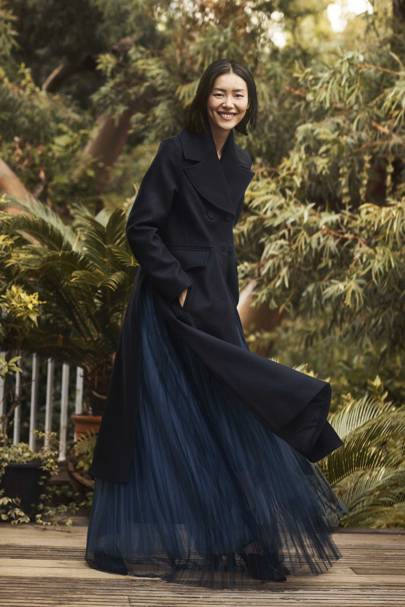This season the Swedish high-street giant has introduced recycled cashmere created from leftover yarn that has been respun, and velvet made of recycled polyester partly sourced from used uniforms. “We have been developing this velvet for years to get a quality we're happy with,” Brännsten explains of the brand's closed loop production efforts on these heavier materials that have finally come to fruition in its first autumn/winter Conscious Exclusive line.
Indeed, the H&M group’s innovation sector has allowed for recycled polyester and TENCEL™ to filter into wider eco-conscious pieces on the shop floor that are appropriately illustrated with green tags. Today, 35 per cent of the materials the H&M group uses to make its clothes are organic, recycled or sustainably-sourced. “Our goal is to increase this share every year, and use 100 per cent sustainably-sourced materials by 2030,” Brännsten explains. “By 2020 the company is aiming for all cotton in our range to come from sustainable sources.”

“Goals” and “aims” are certainly moving H&M in the right direction, but considering that the company’s “vision is to lead the change towards a renewable fashion industry”, shouldn’t the promises be set in stone? And the green tags that signify a traceable production chain have the exact information on all the manufacturing touch points a garment has been through? In 2018, for example, H&M pledged to educate its customers through the Take Care concept – a combination of products, guidance and services encouraging and inspiring customers to care for and prolong the life of their fashion – in France and Germany. Although Brännsten promises that there are “big plans for this concept going forward” it is still isolated to these two markets.

“Goals” and “aims” are certainly moving H&M in the right direction, but considering that the company’s “vision is to lead the change towards a renewable fashion industry”, shouldn’t the promises be set in stone? And the green tags that signify a traceable production chain have the exact information on all the manufacturing touch points a garment has been through? In 2018, for example, H&M pledged to educate its customers through the Take Care concept – a combination of products, guidance and services encouraging and inspiring customers to care for and prolong the life of their fashion – in France and Germany. Although Brännsten promises that there are “big plans for this concept going forward” it is still isolated to these two markets.
But, having a designated team whose single responsibility is to “design desirable products in sustainable materials that can easily be recycled” is more than many high-street brands have on their corporate conscience. As Brännsten told the Copenhagen Fashion Summit back in May 2018, the industry must “align on a common vision and agenda and set industry targets.” Until fashion has a standardised way to communicate sustainability, H&M has to forge its own path. The new 100 per cent organic silk dresses make some stylish first steps.

No comments:
Post a Comment